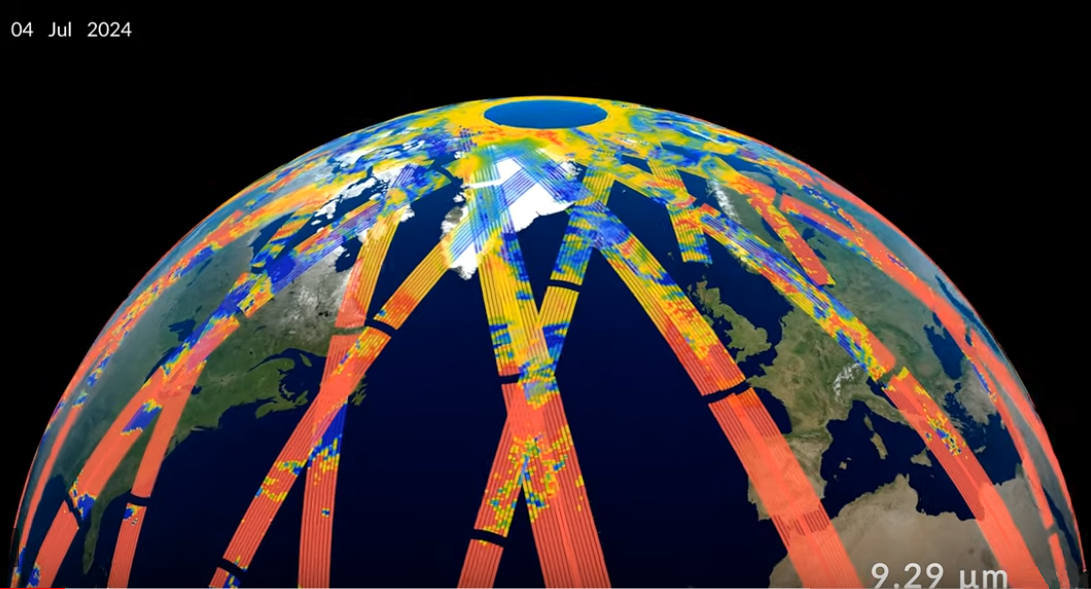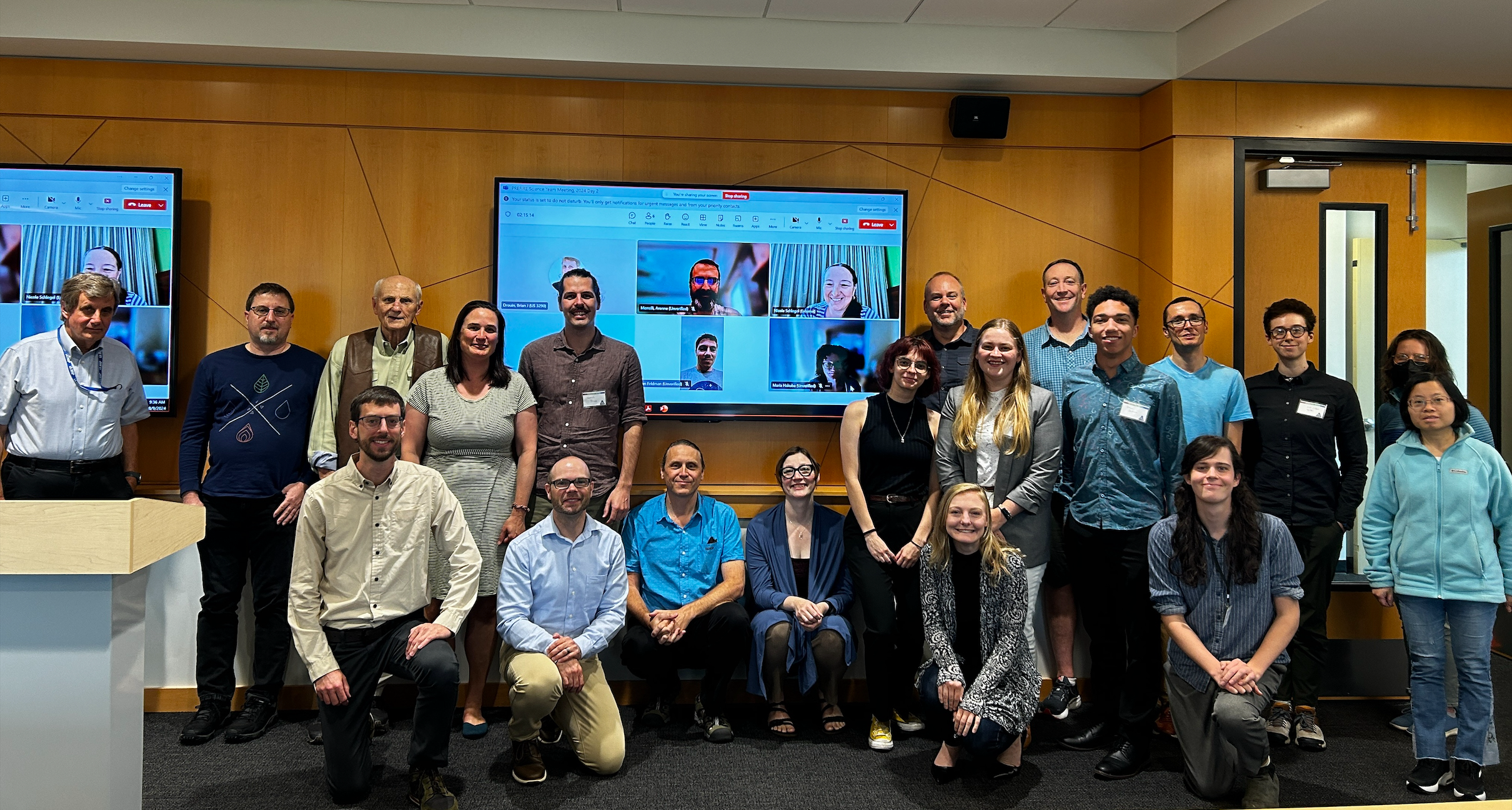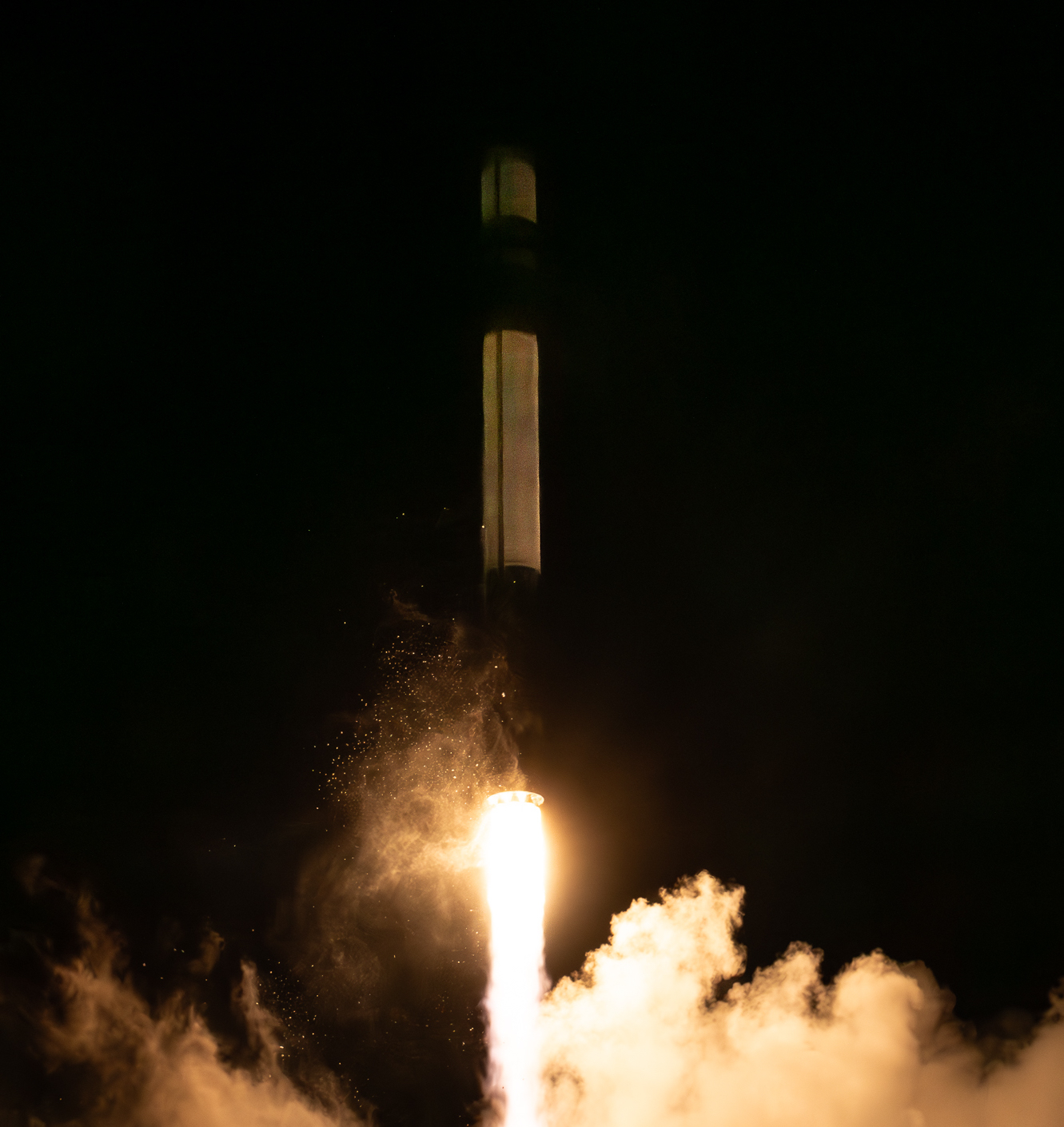Published on 06 Apr 2022 | Callyn Bloch
Gaining research experience in graduate school is essential preparation for finding a niche in science and for becoming a better scholar.
As a result, the leaders of the Polar Radiant Energy in the Far InfraRed Experiment – designed to study Arctic climate by measuring polar radiant energy – have made student research a priority. In fact, there are more students participating on the science team than research scientists, says Tristan L’Ecuyer, principal investigator of NASA’s PREFIRE at the University of Wisconsin–Madison Space Science and Engineering Center.
Meredith Grames, a UW–Madison student, along with students Colten Peterson, University of Michigan, and Jonah Shaw, University of Colorado Boulder, bring different backgrounds to the project but they share a common interest in expanding knowledge about Earth’s climate.
Here are the students’ perspectives on research and Earth’s changing climate – perspectives that are shaping their future directions in science.
Meredith Grames

Meredith Grames believes the PREFIRE mission will have a significant impact on the Earth sciences. “The arctic is changing so rapidly,” she says. “This mission will be able to measure these changes and lead to better understanding of climate and climate change in the polar regions. These far-IR measurements are very useful for atmospheric science research.”
Meredith Grames is a master’s student at the University of Wisconsin-Madison. Credit: Meredith Grames Her PREFIRE research focuses on developing and fine-tuning a clear-sky atmospheric retrieval algorithm, to measure atmospheric variables including temperature, water vapor mixing ratio, skin temperature and total precipitable water. Her work will complement an algorithm under development by Aronne Merrelli, PREFIRE co-investigator and one of her advisors.
Grames’ algorithm is computationally less complex and therefore much faster than Merrelli’s algorithm, which uses optimal estimation. Since it is faster, her algorithm will provide quick snapshots of the atmospheric state. This algorithm may be useful for the PREFIRE mission and could also be used as a backup cloud detection algorithm. She has presented this research at PREFIRE science team meetings and meetings of the American Meteorological Society.
Grames is pursuing her master’s degree followed by plans for a Ph.D. in atmospheric and oceanic sciences at the UW–Madison. She came to graduate school with remote sensing experience gained through a summer internship with the NASA Student Airborne Research Program where she looked at ground cover recovery after wildfires. These research experiences have helped Grames solidify her commitment to studying the environment and climate.
Colten Peterson

PREFIRE measurements of the far-infrared spectrum at the poles will be invaluable, says Colten Peterson. “These are pioneering measurements to verify current theories about the climate, and we may be surprised by what we find. I expect the unexpected in this case!”
Peterson is contributing to the PREFIRE mission by developing a physical basis for an Arctic cloud phase algorithm using the far-IR. This algorithm may serve as the basis for one that PREFIRE will eventually develop and use. It has provided a preview of information the far-IR can provide.
Colten Peterson is a Ph.D. candidate at the University of Michigan. Credit: Colten Peterson Before attending graduate school, Peterson met L’Ecuyer who introduced him to PREFIRE. The mission interested him, and he wanted to get involved. In 2019, Peterson received the Future Investigators in NASA Earth and Space Science and Technology award for his proposal on Arctic cloud phase research using the far-IR. This experience helped pave the way to involvement with PREFIRE.
In addition to his research with the cloud phase algorithm, Peterson has helped the mission by creating figures for PREFIRE journal articles, presenting his findings at science team meetings and publishing papers on IR cloud phase classification.
He has a bachelor’s degree in physics and mechanical engineering from Southeast Missouri State University and became interested in remote sensing research through a NASA summer internship in the Student Airborne Research Program.
“This internship changed the direction of my interests and studies,” Peterson explains. Through it, he gained research experience in ocean remote sensing that has led him to pursue a Ph.D. in the field at the University of Michigan with his advisor and PREFIRE co-investigator, Xianglei Huang.
Currently, Peterson is working on a project that focuses on the detection of Arctic mixed phase clouds using combined far-IR and mid-IR information. He is planning to graduate in spring 2022 and is headed to NASA Goddard Space Flight Center for a postdoctoral position.
Jonah Shaw

“Even one year of [PREFIRE] observations in the arctic will help us understand more about the Earth’s climate processes,” says Jonah Shaw.
Shaw works with his advisor and PREFIRE Co-Investigator Jennifer Kay. He joined her group in Fall 2020 as a Ph.D. student in atmospheric and oceanic sciences at the University of Colorado Boulder. Through his research, he aims to learn how the new observations of Earth’s radiation at the poles will affect climate models.
Jonah Shaw is a Ph.D. student at the University of Colorado Boulder. Credit: Jonah Shaw “Once you have the observations, you can determine if anything is missing from the climate models, and then adjust the model if necessary,” Shaw explains.
Each time the model runs, the initial conditions – the best estimations of the Earth’s current climate state variables – are slightly modified. This process is repeated many times to create an ensemble, which is an average of all the model runs.
Climate model ensembles of the Arctic show vastly different outcomes depending on the initial conditions that are set before running the model, says Shaw. As the global temperature increases, some models show minimal sea ice changes, while others show a massive sea ice loss.
Shaw is analyzing how satellite observations of sea ice concentration, surface temperature and absorbed shortwave and longwave radiation compare to the model ensemble. This type of comparison can reveal how well the model is performing. If the observations fall within the model ensemble, the model is working as expected.
His research shows that Arctic climate models may be missing physical climate information and the far-IR radiation measurements may help with a solution. Shaw wants to determine how the far-IR observations from the PREFIRE mission will help fill in the climate information gaps, and potentially improve climate models.
“Once you understand the climate processes driving the satellite observations, then you can work to improve your model,” says Shaw.
Shaw received his bachelor’s degree in physics from Carleton College in Minnesota. Following graduation, he moved to Colorado to work in a government physics lab where he learned about lasers in the mid-to far-IR microwave region of the electromagnetic spectrum. A year later, he was awarded a Fulbright U.S. Student Program grant and joined a climate science research group in Oslo, Norway. Each career step has solidified Shaw’s aspirations to be a part of a project with a bigger, more tangible, climate mission.
“Climate science is so collaborative,” Shaw explains. “Talking to someone who knows a lot more than you is very valuable in learning.”
The mission’s focused timeframe allows for students to create and complete a research project within two to five years, ideal for obtaining either an M.S. or a Ph.D. degree.
This research is supported by NASA. Homepage image credit: Jcrane
- PREFIRE First Light Announcement!
- 2024 PREFIRE Science Team Meeting
- Second PREFIRE Satellite Launched!
- Update on second PREFIRE CubeSat launch
- First PREFIRE Satellite Launched!
- Rocket assembly pics and PI radio interview
- Launch update and a new short video!
- NASA's tiny twin polar satellites (first launch soon)
- Names for the PREFIRE Launches!
- Pre-launch anticipation of PREFIRE CubeSat science
Recent Posts

NASA has publicly released the first look at PREFIRE mission data, also known as the first light announcement! The PREFIRE science team worked with NASA’s Scientific Visualization Studio to create a first light video. It showcases some of the fascinating infrared details of the Arctic surface and atmosphere that PREFIRE-SAT2 captured in July 2024. The PREFIRE science team is hard at work analyzing the countless measurements that the twin CubeSats are radioing to the ground every day.
Read more
The 2024 PREFIRE Science Team Meeting was held at the University of Colorado on August 8th and 9th. The PREFIRE team, led by Tristan L'Ecuyer (PI) discussed the status of the PREFIRE CubeSats and instruments, the Science Data Processing System (SDPS), and preliminary data output, as well as the nuances and considerations of this unique dataset. The team also discussed potential validation activities and heard from several external scientists about related projects with the potential for both collaboration and validation.
Read more
Rocket Lab successfully launched the second of two PREFIRE satellites from Mahia, New Zealand at 3:15 pm NZST (3:15 am UTC).
Read more
Rocket Lab has scheduled the second attempt at the #2 (and final) PREFIRE launch for June 5, 2024 at 03:13 am UTC! That is June 04, 2024 at 10:13 pm Central time in North America. Also, here is the official patch of the 49th Rocket Lab launch, PREFIRE and Ice. It depicts the kickstage (3rd stage) of an Electron rocket with a satellite on top, a polar bear on a chunk of polar ice, and a starry sky.
Read more
Rocket Lab successfully launched the first of two PREFIRE satellites from Mahia, New Zealand at 7:41 pm NZST (7:41 am UTC).
Read more